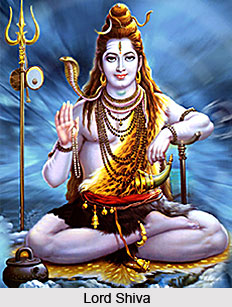 Religious influences on ancient South Indian culture witnessed the propagation of various spiritual philosophies by various saints. Hinduism was a major practiced religion as compared to other religions in ancient South India. Among other religions Buddhism died out in many parts of India by the end of the 6th century. Jainism, however, had comparatively a greater hold than Buddhism among the masses. Between the seventh and ninth centuries Hinduism was the most popular religion during that time as it was propagated by several saints. They enchanted people by their devotional songs in praise of Lord Shiva and Lord Vishnu.
Religious influences on ancient South Indian culture witnessed the propagation of various spiritual philosophies by various saints. Hinduism was a major practiced religion as compared to other religions in ancient South India. Among other religions Buddhism died out in many parts of India by the end of the 6th century. Jainism, however, had comparatively a greater hold than Buddhism among the masses. Between the seventh and ninth centuries Hinduism was the most popular religion during that time as it was propagated by several saints. They enchanted people by their devotional songs in praise of Lord Shiva and Lord Vishnu.
The Bhakti form of Hindu religion was greatly in vogue in South India. The Vaishnava saints or Alvars were twelve in number and a collection of their hymns "the Prabandha" were recited there in the temples. The greatest saint was Nammalvar. There was also a woman saint Goda who worshipped Lord Krishna and is considered as a southern counterpart of Mirabai. While Tamil saints were appealing to the heart of the people in their own language, Sanskrit scholars were attracting the minds of the elite in colleges and courts. Indian epics like the Ramayana and Mahabharata were being translated into languages which people could understand.
Adi Sankaracharya was one of the major saints of South India. He was born in the eighth century probably in the year 738 A.D. He began ascetic life at the age of eight and wrote works at the age of twelve. He travelled throughout India and made Vedantic philosophy popular among the masses. He established Hindu centres for Sanyasis in all the four corners of India. His most prominent works were the commentaries he wrote on the Upanishads and the Brahma-Sutras by Badarayana. The Shaivites also accepted him as he paid homage to Lord Shiva and Shakti. However the Vaishnavas did not take him willingly. For them Ramanuja was the most important saint. Ramanuja accepted God both with and without form. He emphasized that salvation could come from the grace of God. He did not believe that the world was an illusory. He organised seventy four districts in different parts of India with a pious householder as the head of each. Srirangam was established as the head-quarters in the South. There were around sixty three Shaivite saints. The most eminent saints were Sambandha, Appar, Manikka Vachaka and Sundaramurti. Toleration was one of the grand attribute of the Andhran rule. Both Jainism and Buddhism flourished there.
Religious influences were also visible in the architecture of that time. The rock-cut caves of the Western Ghats namely the Bhaja, Kordane, Ajanta, Bedsa, Nasik and Karli and the monasteries of Ellora in Hyderabad reveal this.



















